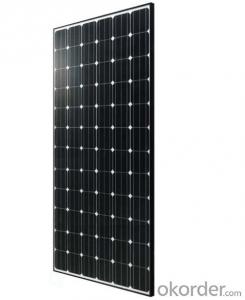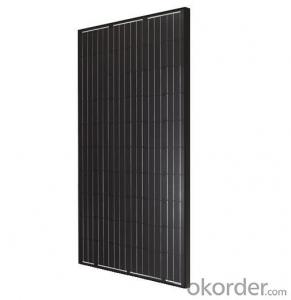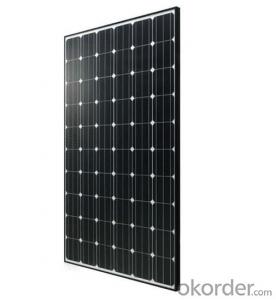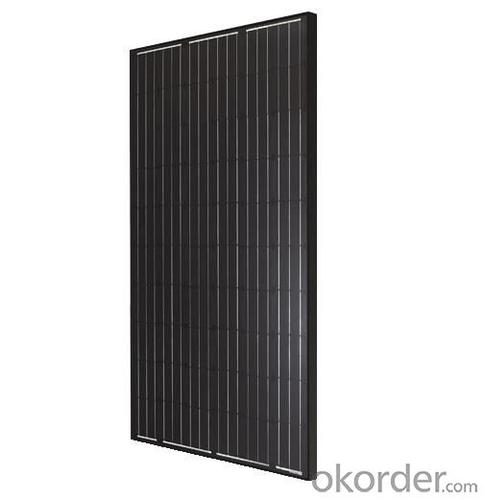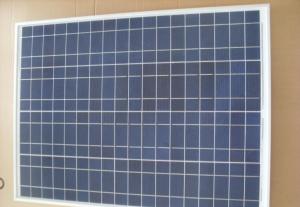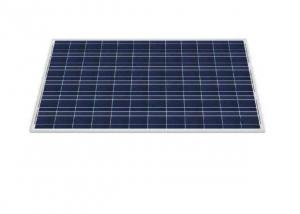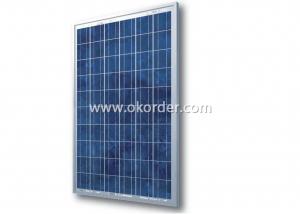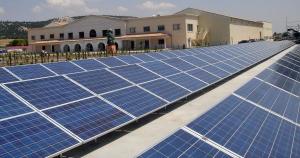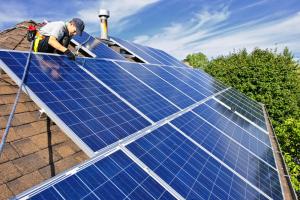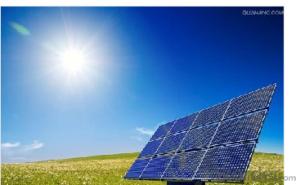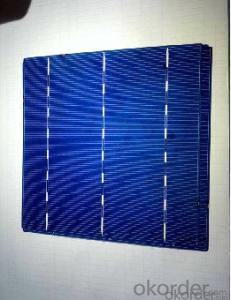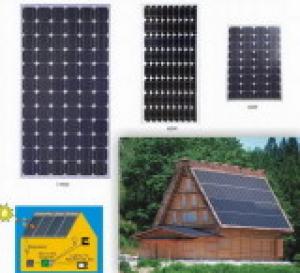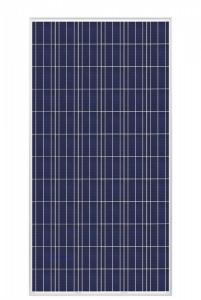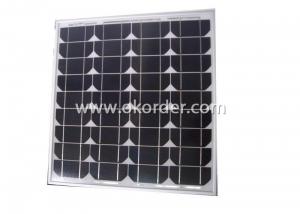Arlo Pro 2 Solar Panels Compatible Mono Panel SWE-M660 Series 260W
OKorder Service Pledge
OKorder Financial Service
You Might Also Like
SWE-M660-250/255/260/265/270
MONO CRYSTALLINE SOLAR MODULE
futures:
High module efficiency and stable power output base on leading process technology
Outstanding electrical performance under high-temperature or low-irradiance conditions
Ease of installation and applications due to the innovative engineering design
Rigorous quality control meets the highest internationalstandard
Added Value From Warranty
High module efficiency up to 16.60%
Positive power tolerance: 0/+5W
Robust frame to up to 5400Pa load
Self-cleaning surface
Anti-PID technology
Hot-Spot protect
Anti-Reflective glass
data sheet
| Electrical Characteristics @ STC | SWE-M660-250 | SWE-M660-255 | SWE-M660-260 | SWE-M660-265 | SWE-M660-270 |
| (STC:standard Test Conditions) | |||||
| Max. Power (PMAX) [ Wp ] | 250 | 255 | 260 | 265 | 270 |
| Power Output Tolerance (PMAX) [ Wp ] | 0/+5 | 0/+5 | 0/+5 | 0/+5 | 0/+5 |
| Max. Power Voltage (VMPP) [ V ] | 30.6 | 30.8 | 30.9 | 31.2 | 31.4 |
| Max. Power Current (IMPP) [ A ] | 8.17 | 8.28 | 8.42 | 8.5 | 8.6 |
| Open-Circuit Voltage (VOC) [ V ] | 37.6 | 37.8 | 37.9 | 38.2 | 38.4 |
| Short-Circuit Current (ISC) [ A ] | 8.7 | 8.96 | 9.1 | 9.19 | 9.28 |
| Module Efficiency (ŋm) [ % ] | 15.4 | 15.7 | 16 | 16.3 | 16.6 |
- Q: I need to use solar panels to charge lead acid batteries in an off-grid application. I understand that solar panels have a open circuit maximum voltage and an maximum amperage under no resistance, and that one can optimize the power output by regulating the load (resistance). If so, is just connecting 2 -volt solar panels to a lead-acid battery inefficient? Are there devices that will maximize 2 volt output power (by varying the resistance)? Am I on the right track here? Thanks for any help.
- The answer is actually quite complicated, but if you're planning on building just a very small system, most likely, the panel will be small and weak. In this case, connecting a panel that is 8 volts open circuit directly to a lead-acid battery is probably the most efficient way to charge. There are charge controllers that you can buy, some of which actively track the maximum power point for charging your battery. Unfortunately, those controllers might eat 5 or 0 watts, just to get you another few percent of charging efficiency. If your panel is only 50 watts in the first place, you can see that this is not a good deal. If you're getting serious panels (clue: price $500 each), then you may very well benefit from a charge controller with MPPT (max power point tracking). Lead-acid, either a flooded cell like your car battery, or AGM, are the standard for solar energy storage. Lithium ion is better in many ways, being less sensitive to temperature, state of discharge, and they are also lighter. Charging them is also more straightforward with the right circuitry. The problem is, they cost like $500 per kWh, compared with less than a tenth that price for lead-acid.
- Q: How do solar panels affect the electricity bill?
- Solar panels can significantly reduce or even eliminate electricity bills by generating clean and renewable energy from the sun. By harnessing solar power, these panels can offset a portion or all of a household's electricity consumption, thereby reducing the amount of power needed from the utility grid. This ultimately leads to lower electricity bills and potential savings over the long term.
- Q: I don't have a regulator connected as they are a little expensive for a pensioner, If I join the panels into line to the battery bank from the roof should that be OK.?
- You can do this, but it isn't the best way to go. There is no problem with joining the solar panels. There are two ways to do this, in series and in parallel. A series combination will add the voltages that each panel is producing together, but not the amperages. For example, if five panels are producing 6V at 300mA each, the end result will be 30V at 300mA for a series array. A parallel combination combines the amperages of all the panels, but not the voltages. So, in our earlier example, five panels at 6V and 300mA would provide 6V and 500mA (.5A) if wired in parallel. Series-parallel combinations are also possible, giving some of the benefits of each method. This would probably better understood by doing a quick search on Google Images for series, parallel, and series-parallel. You CAN connect the solar panels directly to your battery bank with no regulator. Unfortunately, without a regulator, the connection is two-way. When the sun is out and the solar panels are producing more voltage than the batteries, the batteries will charge. However, when the panels are producing less voltage than the batteries, the batteries will instead send power into the solar panels, which will be dissipated and wasted. The panels may charge your batteries during the day, but they will discharge them at night.
- Q: I'm part of the Sustainability group at school, the school principal is a d**k and doesn't care about the environment, he only cares about money.Me and the group will be talking in front of him and the school council (the people in-charge of the school's money) To convince them to put solar panels on the school roofs.I know that it definitely will help the school save on electricity bills, but it WILL cost a lot of money to put them in.In the end we just wanna reduce carbon emissions!HELP :)
- When okorder / Good luck but the best way to win is to find a way to get it done and then they can't say no.
- Q: Alright my family and i are buying a new home in Bradford,Ontario, we we thinking about solar panels and had a couple questions:. how much are they each?2. how many will we need to power a single family home(4 ppl)3. where can we find them in ontario?4.how much money do they really save you?5.what kind of energy do they providfe you withand other basic info or a website i can check out would be great!thanks in advance!
- I have a system that was installed last year. I have 20 panels which provide me with about 75% of my electricity. I do use less electricity than the average home. I use an average of 45 kwh in the summer, my neighbor uses more than double that. I paid $26K for the system, but I got a $0K rebate from my utility and the US gives a fed. tax credit. I am saving about $2K per year, so it will take just over 6 years to break even. I also have what I think is called net metering, my utility allows my meter to run backwards when I generate more energy than I use, so pretty much the entire time the sun is out in the summer. Having energy efficient appliances, reducing standby energy and using conservative climate control really helps keep my usage down. Weather striping, insulation and clean well maintained systems all help as well.
- Q: Can solar panels be used in areas with high levels of air pollution?
- Yes, solar panels can be used in areas with high levels of air pollution. Although air pollution can reduce the efficiency of solar panels by blocking sunlight, advancements in technology have made solar panels more resilient to such conditions. Moreover, regular cleaning and maintenance can help mitigate the impact of air pollution on solar panels.
- Q: Can solar panels be installed on water bodies or reservoirs?
- Yes, solar panels can be installed on water bodies or reservoirs. This type of installation is known as floating solar or floating photovoltaic (PV) systems. By installing solar panels on water bodies, it maximizes the use of space and offers numerous benefits such as reducing water evaporation, increasing energy production due to the cooling effect of the water, and providing an opportunity to repurpose underutilized water surfaces for renewable energy generation.
- Q: can you buy single solar panels say to power a washing machine fridge etc.if so where can i buy them from
- Electicity okorder
- Q: How could I find out what the amp output of a solar panel? Specifically, I want to know how many milliamps can the solar panel on a Casio fx-260 put out?
- You need full sunshine from the sun, or a lamp that will give a light spectrum similar to the sun, a volt meter, Milli-amp meter, and a variable resistor of 0 to 000 ohms. The voltmeter test leads go across the solar cell leads. The amp meter leads will be in series with the solar cell. Let's say, positive lead of the solar cell to the the positive lead of the amp meter, the negative lead of the amp meter to one terminal of the variable resistor, and the wiper terminal of the variable resistor to the negative lead of the solar cell. Slowly decrease the value of the resistor until the voltage from the solar cell just begins to drop. Take note of the amp meter reading. This is about the high end range of the solar cell. You might want to begin with a micro-amp meter for the current meter.
- Q: How do you know when it is a good deal to buy a solar panel. For example, what is a good cost per watt, how many volts should I expect, etc.
- first okorder / example: house roof is 20' x 20' 20' = 240, so sq. inches of roof is = 57,600 say rain fall for your area is 3 per month on average. 57,600 x 3 = 72,800 of rain collected. Using the conversion chart link above, that many cubic inches of water = 750 gallons of water free per month. Look at your water bill and see how much you use. Solar panels take on average 2-20 yrs to pay themselves off, just in time for them to be replaced. Paddle wheels go on for just about forever. We still find large paddle wheel mills in the USA that are over 200 yrs old, and still functioning.
Send your message to us
Arlo Pro 2 Solar Panels Compatible Mono Panel SWE-M660 Series 260W
OKorder Service Pledge
OKorder Financial Service
Similar products
Hot products
Hot Searches
